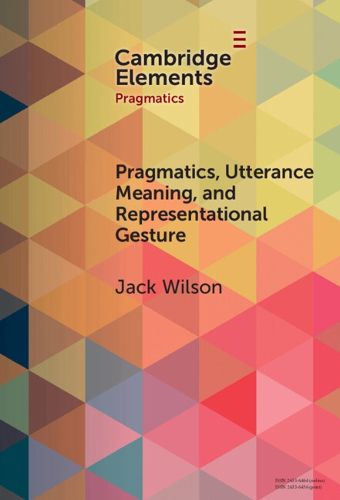Readings Newsletter
Become a Readings Member to make your shopping experience even easier.
Sign in or sign up for free!
You’re not far away from qualifying for FREE standard shipping within Australia
You’ve qualified for FREE standard shipping within Australia
The cart is loading…






Humans produce utterances intentionally. Visible bodily action, or gesture, has long been acknowledged as part of the broader activity of speaking, but it is only recently that the role of gesture during utterance production and comprehension has been the focus of investigation. If we are to understand the role of gesture in communication, we must answer the following questions: Do gestures communicate? Do people produce gestures with an intention to communicate? This Element argues that the answer to both these questions is yes. Gestures are (or can be) communicative in all the ways language is. This Element arrives at this conclusion on the basis that communication involves prediction. Communicators predict the behaviours of themselves and others, and such predictions guide the production and comprehension of utterance. This Element uses evidence from experimental and neuroscientific studies to argue that people produce gestures because doing so improves such predictions.
$9.00 standard shipping within Australia
FREE standard shipping within Australia for orders over $100.00
Express & International shipping calculated at checkout
Humans produce utterances intentionally. Visible bodily action, or gesture, has long been acknowledged as part of the broader activity of speaking, but it is only recently that the role of gesture during utterance production and comprehension has been the focus of investigation. If we are to understand the role of gesture in communication, we must answer the following questions: Do gestures communicate? Do people produce gestures with an intention to communicate? This Element argues that the answer to both these questions is yes. Gestures are (or can be) communicative in all the ways language is. This Element arrives at this conclusion on the basis that communication involves prediction. Communicators predict the behaviours of themselves and others, and such predictions guide the production and comprehension of utterance. This Element uses evidence from experimental and neuroscientific studies to argue that people produce gestures because doing so improves such predictions.